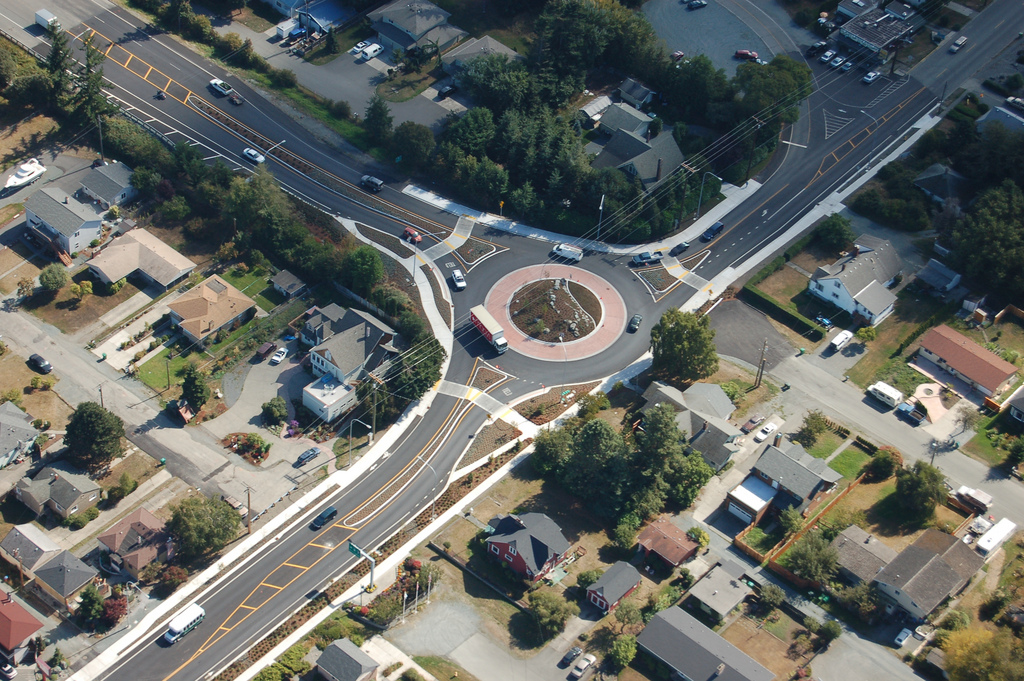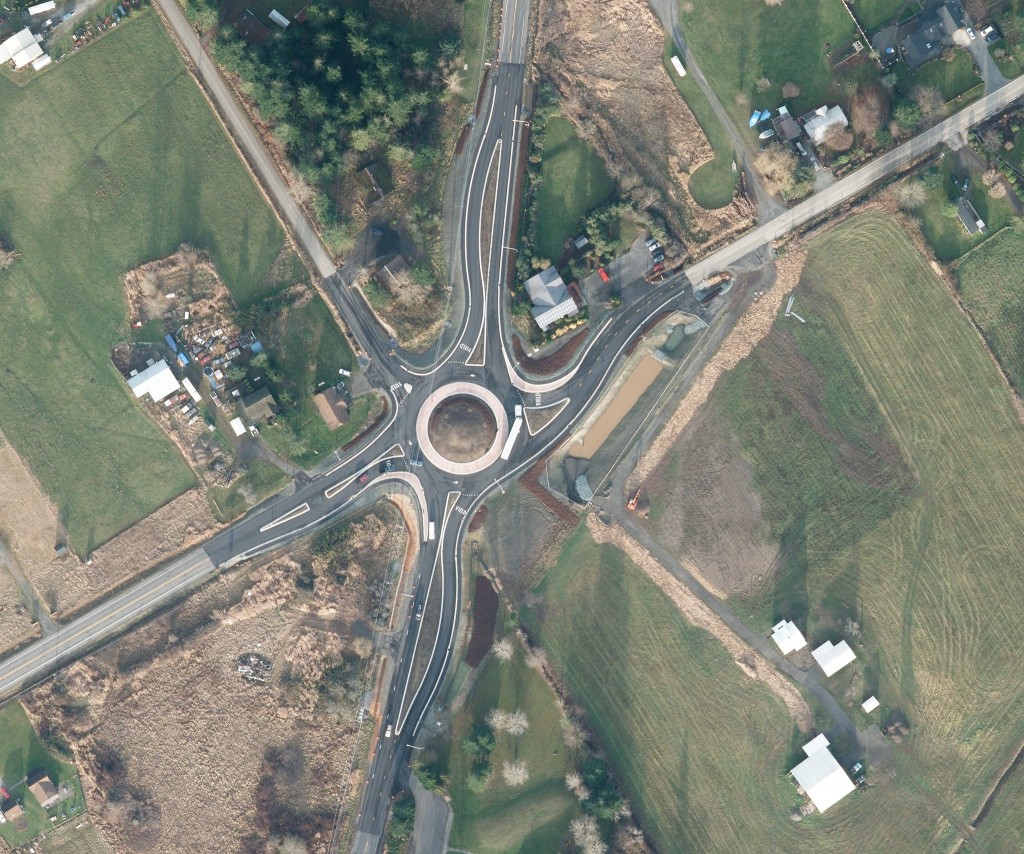
One of the classic games that I play with my family when I go to France is: where did they put in a new roundabout?
To American drivers, Europe is known for its numerous roundabouts. The invention has revolutionized driving through intersections and has made improvements in all domains, including accidents, gas consumption, the numbers of cars that get through or even pedestrian friendliness.
The invention has yet to come into full force on the other side of the Atlantic and Americans are reluctant to give up their less-efficient 4-way stops and traffic lights. The benefits are numerous though:
- Roundabouts are part of the solution to America’s traffic violence problem as they reduce accidents by 40% and fatalities by a whooping 90% over 4-way stops or lights.
- By not having cars idling as they wait their turn in a “traditional” intersection, roundabouts reduce gas consumption by 30% and make for less polluted cities
- Roundabouts require much less maintenance (versus electrical maintenance in lights) and are much cheaper than any other type of intersections in the long run
- Roundabouts make street crossing much safer for pedestrians in many ways. First, they split the crossing into two parts, already reducing crossing distance by half. They also eliminate the sometimes numerous turn lanes which can easily double the width of a street. This often leads to crossing distances being a forth shorter than previous intersections.
- They also make cyclist’s lives easier by making left turns from the right lane possible. Reaching left turn lanes on busy streets often require crossing two lanes of fast-moving traffic, a stressful experience for bikers.
- They provide more open space in the city, whether that would be used as green space or for public art.
In Seattle, roundabouts would be a welcome sight to streets that have enough capacity for cars to use them but not enough capacity at intersections. They would improve dangerous intersections for all modes of traffic. They are also the only intersection system that works well with 5 (or more)-way feeder roads, which are especially numerous with Seattle’s colliding grids.

Roundabouts should be located throughout Seattle in various dangerous or congested intersections. Some suggested locations include:
- Seattle Blvd/5th Ave/Dearborn St in the International District
- 2nd Ave Ext/3rd Ave/Main St in Pioneer Square
- Denny Way at:
- Stewart St/Yale Ave
- Wall St/Battery St/Aurora Ave/7th Ave
- Westlake Ave/Nickerson St/Dexter Ave/Fremont St at the south end of the Fremont Bridge
- Fremont Way/Fremont Ave/39th St
- The Montlake Triangle
- Rainier Ave/Hill St/23rd Ave
- Rainier Ave and MLK Way
- Marginal Way/Chelan Ave/Delridge St, at the west end of the West Seattle Bridge. This is a major intersection problem on the Alki bike trail.
- Fauntleroy Way at 35th Ave, Avalon Way and Alaska St
- California Ave/Edmunds St/Erskine Way
- All over Madison Street from Broadway to Madison Park
Guy is a high school student in Bellevue with a strong desire to become an urban planner. Before moving to Bellevue, he grew up in the Paris metropolitan area where he fell in love with and learned from some of the best rail systems in Europe. Translating his experiences from abroad to Seattle, Guy is now passionate about improving this region's public transit (especially marine-based transportation) and cycling infrastructure. Aside from the technical side of things, Guy also enjoys photography and music.

